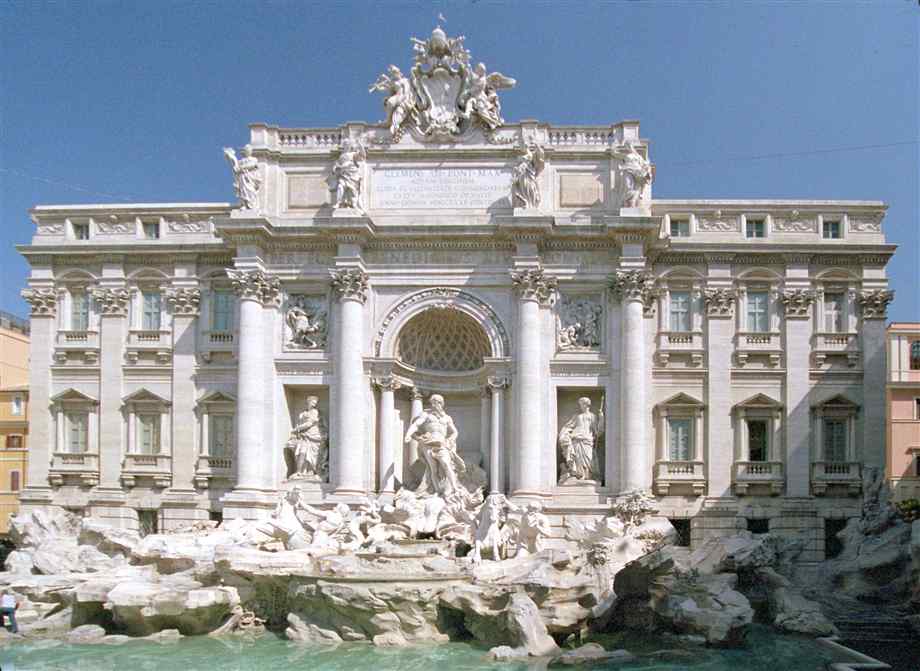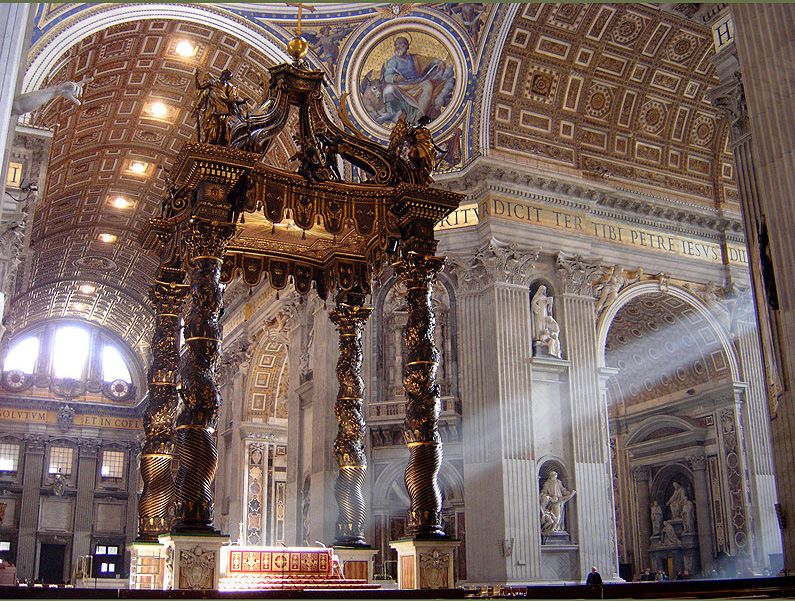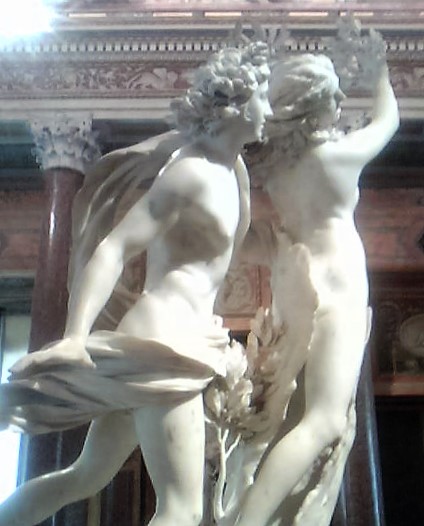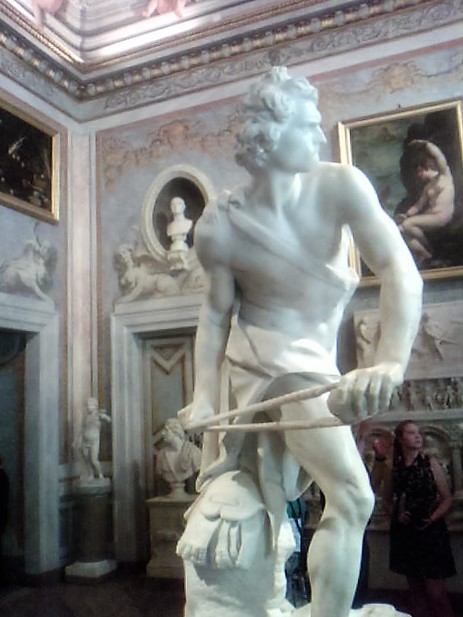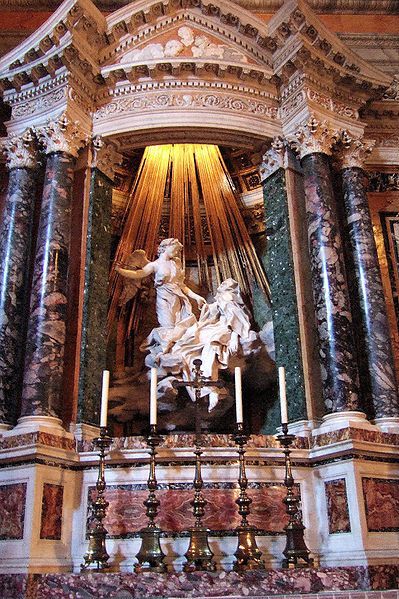
The baroque, the period between the Renaissance and Neoclassicism, has lasted a century and a half and is often the indication for something exaggerated or exalted, something with unnecessary frills.The indication for the lavish style, that after 1600 especially in the Catholic countries of Europe arose, was derived from the Iberian word barocco and means oddly shaped pearl which was not intended flattering.
This negative notion changed at the end of the 19th century by contrasting the Baroque with the Renaissance and to highlight the openness, dynamism and the overwhelming theatricality of major works such as the Trevi Fountain, the steps of Augustusburg Palace in Cologne or the facade of the cathedral of Santiago de Compostela (*).
In the arts, the Baroque was a Western cultural period, starting roughly at the beginning of the 17th century in Rome, Italy. It was exemplified by drama and grandeur in sculpture, painting, literature, dance, and music (George Frideric Handel, Antonio Vivaldi, Bach). The popularity and success of the Baroque style was encouraged by the Roman Catholic Church which had decided at the time of the Council of Trent (1545-1563) that the arts should communicate religious themes in direct and emotional involvement. The aristocracy also saw the dramatic style of Baroque architecture and art as a means of impressing visitors and expressing triumphant power and control. Baroque palaces are built around an entrance of courts, grand staircases and reception rooms of sequentially increasing opulence. In similar profusions of detail, art, music, architecture, and literature inspired each other in the Baroque cultural movement as artists explored what they could create from repeated and varied patterns. (*) end point of the Camino de Santiago, known in English as the Way of St. James, a network of pilgrims' ways or pilgrimages leading to the shrine of the apostle Saint James the Great in the cathedral of Santiago de Compostela in Galicia in northwestern Spain, where tradition has it that the remains of the saints are buried there. Many follow its routes as a form of spiritual path or retreat for their spiritual growth. It is also popular with hiking and cycling enthusiasts and organized tour groups. |
